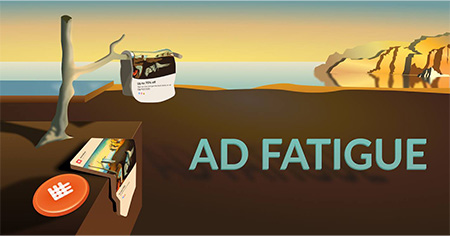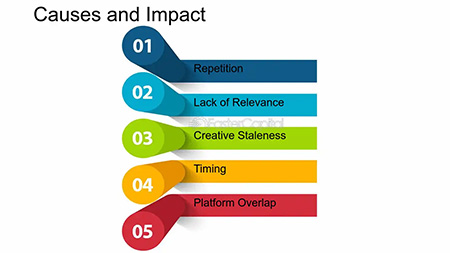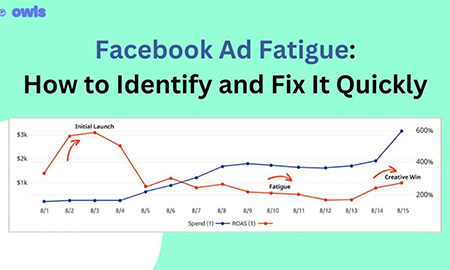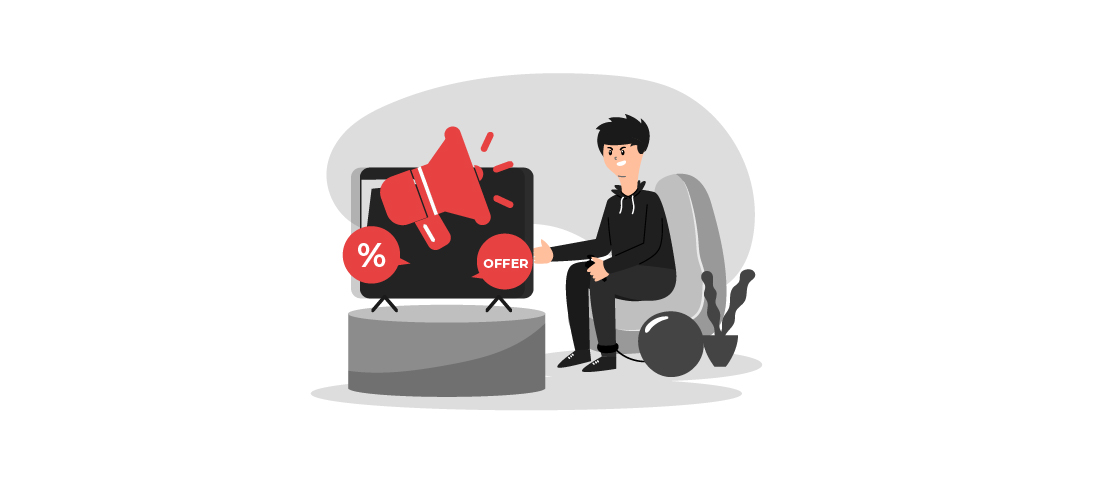Introduction
Ad fatigue arises when your audience is exposed to the same ad too many times, making them disinterested or actively tune it out. In the highly saturated online world of today, this can creep into campaign performance without being noticed right away. It is not merely about fewer clicks but also about budgets getting drained, listeners getting away, and opportunities to grow, yet! As the consumers become more immune to repetitive commercials, it cannot get more critical than upkeeping the campaign's edginess and engagement levels. An early diagnosis of ad fatigue may disguise the success of a campaign or remain it withered. Keep abreast of concepts such as reasons for ad fatigue, preventing ad fatigue, and finally catalog it along with remaining relevant, achieving conversion, and optimizing ROA ad spends.

Why Ad Fatigue matters?
Reduced Campaign Effectiveness
As ad fatigue sets in, even high performing campaigns start to lag. Your customers become less engaged, interactions decrease, and your message fails to resonate. What was once high-interest now goes by the board without so much as a backward glance. Lower click-throughs and fewer conversions are typically the first indications that your creative has lost its sparkle. Keeping your audience interested requires scheduled refreshes to keep your campaigns current and timely.
Increased Advertising Costs
As interest wanes through ad fatigue, sites tend to counteract this by requiring more money to reach the same people. This escalates your cost per click and eventually your cost-per-acquisition. In effect, you're spending more for less effectiveness. Instead of scaling results, you're throwing budget just to remain top of mind. Effective advertising equates to tracking performance indicators closely and making changes in time so that wasteful expenditure is avoided and your return on investment is maximized.
Damage to Brand Perception
Running the same ad over and over again annoys your consumers, and your brand becomes annoying or intrusive. Overexposure not only diluted your message, it can alter how individuals perceive your brand entirely. What starts as familiarity becomes annoyance in an instant. In a universe where brand image is paramount, letting ad fatigue persist wears down trust and hurts long-term loyalty and attitude towards your company.
Missed Opportunities for Growth
Ad fatigue not only slows performance, it thwarts potential growth. When your message is no longer exciting or interactive, you're missing opportunities to gain new customers, cultivate leads, or increase reach. Without new creative and timely targeting, your campaign can't stay ahead of the competition. To remain relevant, you need to continuously optimize in order to unlock new pathways of engagement and keep your marketing working towards significant business results.

Causes of Ad Fatigue
Repeated exposure to the same ad message
Repeatedly seeing the same message too soon results in audience fatigue. Familiarity breeds indifference, and your initially powerful ad turns into background noise. Even great creatives can lose their power when repetition gets the better of them. A stagnant message fails to stir curiosity or emotion, rendering your campaign obsolete. Avoid this by varying your messaging and updating visuals regularly to stoke interest and keep the momentum going through the ad cycle.
Limited creative variety and stagnant assets
Lack of creative variety is a quick path to ad fatigue. If your images, headlines, and CTAs do not change, audiences start to ignore your content. Predictability makes your brand more ignorable. Without frequent refreshes, your ads get lost in the digital noise. Adding new ideas, formats, and perspectives to your campaigns is necessary to maintain your message cutting, fresh, and engaging in all touchpoints.
Oversaturating your target audience
Overexposure can turn off even your most loyal patrons. When your ads are seen too often across platforms, your brand can become a digital annoyance. The flood of messages creates ad blindness, with users scrolling by without even registering. Subtle management of ad frequency and rotation of creatives in response to audience behavior is essential. Intelligent balance between visibility and holding back keeps your message strong without getting over the line into irritation.
Running ads too often or too infrequently
Both ends of ad frequency can cause fatigue. Too frequent exposure overpowers your audience, and too rare exposure lets your brand lose momentum. Consistency is paramount, so is moderation. An informed rhythm using engagement data allows your ads to remain fresh and relevant. Discover the sweet spot of ad timing to keep attention sharp without burning it out, allowing your campaigns to reach maximal, long-term success.

How to recognize when Ad Fatigue occurs
Declining click-through rates and engagement
When click-through rates start to fall and user engagement slows, suspect ad fatigue is just around the corner. Audiences are tuning out, no longer being motivated to act or interact. These minor drops in performance metrics signal fading enthusiasm. Tracking your CTR and engagement levels on a regular basis can detect fatigue ahead of time so that timely changes can shake life into the campaign's performance.
Increased costs and lower ROAS
A higher cost per outcome with decreasing returns indicates something more profound than ad spend inefficiency, it's usually ad fatigue masquerading as such. When platforms are charging more to sustain reach, your ROAS takes a hit. That budget imbalance is not stable. Monitoring your cost metrics closely, particularly against performance, allows you to identify when it's time to restart or reorganize your campaign.
High ad frequency leading to audience blindness
Too much frequency blunts impact. The more often users see your ad in a short space of time, the more they'll tune out altogether, a behavior referred to as ad blindness. Too high a frequency is often confused with greater reach, but it tends to damage performance. Keep an eye on your frequency score and heed behavioral signals to make sure your ads are appearing at a pace that comes across as natural, rather than harried.
More negative feedback and fewer conversions
More negative comments, avoided ads, or content concealments can indicate ad fatigue. They are all indicators of rising frustration or indifference with your message. Add them to decreasing conversion rates, and it's obvious that your campaign has gone out of touch. Hearing from audience feedback, both qualitative and quantitative, is important. This enables you to course-correct with intent, engaging users again and maintaining the success of your ad campaigns.

How to Prevent Ad Fatigue?
Rotate Your Ad Creatives
Creative rotation on a regular basis is the ultimate defense against ad fatigue. With every image, message, and format constantly refreshed, your content continues to be fresh and engaging. Not just does it keep the novelty alive, but also allows you to test what performs ideal for your audience. An efficiently created creative cycle keeps your ads from becoming stale and allows your brand to possess a live presence across all platforms.
Leverage Audience Segmentation
Not all the audience will react the same. Segmentation of audience enables you to target people based on demographics, behavior, and interests and make every impression in a more personalized way. That accuracy prevents overexposure and strengthens personalization, reducing ad fatigue risk. Segmentation also gives you insight into what kind of content resonates in each audience, allowing you to take control and optimize your approach to create stronger, more enduring relationships.
Adjust Ad Frequency
The control of how often you expose an audience to an ad is essential in preventing fatigue. Too often, and you are annoying; too infrequent, and you are ineffective. Utilize platform analytics to establish the optimal frequency threshold. Test and turn up or down in real time based on performance to remain top of mind without bombarding users and keeping your campaigns fresh and popular.
Explore Different Platforms and Formats
Mixing up your message across multiple platforms and testing new ad units can infuse new life into your campaigns. From video and carousel to stories and native ads, blending gets attention and boosts reach. Blending where you're advertising and how you're advertising not only avoids fatigue, but also optimizes the chance to hit that perfect channel-audience match, keeping your campaigns new and top-of-mind.
Monitor and Update Campaigns Regularly
Set-it-and-forget-it will not cut it in online marketing. We must monitor things constantly so that you're in a position to catch when performance is about to fall off, thereby having sufficient lead time to refresh creatives, rebid, or retarget segments. Success in campaigns boils down to being responsive and nimble. Being actively engaged means your work remains current with audience behavior and platform trends, so your ads remain fresh and effective in the long run.




